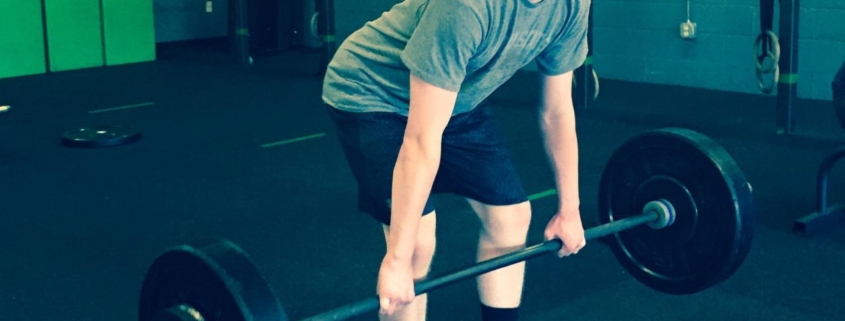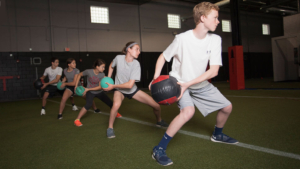Eight Practical Thoughts on Youth Athletic Development
Today, I wanted to share with you some personal thoughts regarding youth athletic development. Youth athletic development fundamentals. I was inspired by a podcast on Upside Strength and it nudged me to think about the things I feel are pertinent to youth athletic development. There is a myriad of insightful and educative content online but today, I wanted to convey what is important to me, at this present moment, and share this with you. So, before I dive into this I want to remind you of a fable.
‘There was once a speedy hare who bragged about how fast he could run, tired of hearing him boast, slow and steady, the tortoise, challenged him to a race. All the animals in the forest gathered to watch.
Hare ran down the road for a while and then paused to rest. He looked back at the tortoise and cried out, “How do you expect to win this race when you are walking along your slow, slow pace?”
The Hare stretched himself out alongside the road and fell asleep, thinking “There is plenty of time to relax”.
Next thing you know, the crowd roared and cheered the tortoise, which woke up the Hare. Alarmed at this, the Hare made a desperate attempt to run toward the finish line, but it was too late, he had lost. Slow and steady wins the race.’ Take this story as you will but it will flow nicely into my first point.”
Long term athletic development – A process not a sprint to the finish line.
What is our overarching goal? What is our endpoint and how do we assess the success of our program?
Start with the end in mind. For me, a number one overarching goal is making sure youth athletes are enjoying the training process. There is probably not going to be any sort of Long term development if the kids are dropping out due to burnout or lack of interest in furthering their training. This does not mean you have to come into training dressed like a clown, nor does it mean that we go so far along this spectrum that it turns into a holiday camp. But the idea of ‘slow cooking’ your youngsters reducing the risk of burnout and increasing engagement, could be down to the environment you create and how you are delivering sessions.
Those who work in the field of athletic development will have heard the terms “repetition without repetition” or “design the task, not the solution” once youngsters learn the skill, the subsequent intent through a game or challenge can facilitate the key adaptations we seek.
Education- ‘give a man a fish you feed him for a day; teach a man to fish and you feed him for a lifetime’
If you have ever witnessed athletes executing their sessions with autonomy and minimal input from the coach, you will realise how rewarding it is. Additionally, it also gratifying when you see youngsters assisting each other by correcting technique or by encouraging each other through a tougher workout. This generally comes from a young athlete learning the training process and taking ownership. I have seen great success with this through guided discovery and questioning, for example asking young athletes ‘why are we doing this particular drill?’ and ‘What benefits will we derive from it?’. Ideally, I would love to reach a point where an athlete can start to design their own programs for themselves, and ask us what we think!
Give them what they are not getting- ‘more of the same isn’t necessarily a good thing’
I am quite passionate about this particular point. Give them what they are not getting. I have witnessed youth sports in a variety of environments. I have noticed a trend. They will typically spend the majority of their day in a classroom, then be expected to play highly dynamic and chaotic sports without any real physical preparation, sometimes, not even an adequate warm up. Now your argument may be “this is what schools and sporting organisations have been doing for years!” This doesn’t mean that it is the right thing and it can accompany unnecessary injuries. As a former school strength and conditioning coach, a goal was to give the kids missing parts of the development puzzle. “Where can I have the most impact?” Typically, this was in the form of quality strength, speed and corrective work, due to my limited contact time. I regarded these as a high priority with respect to physical preparation.
Bouncy athletes- ‘Restoring the bounce’
Playing football in the street or running around in asymmetric environments, is no longer a commonality. A time where kids used to jump fences, climb walls and crawl under objects is now being replaced by Xbox live. Now, no need to be overly dramatic. But, we need to recognise this and think about ways which we can replicate that in some form, within our own training environments. All the aforementioned activities enhanced the kids physiologic springs in the musculotendinous units that enabled children to clear the fences or leap from one rock to the other. If we think of sports performance, tendon and muscle stiffness are hugely important for force transfer. Therefore, I love low amplitude, extensive plyometric exercises, such as pogo jumps or hops in a variety of planes to allow them to express this potential.
Get them strong- ‘Injury occurs when the load exceeds the capacity at that particular time’- Keir Wenham Flatt.
A rather obvious maxim but this doesn’t always mean just adding more plates to the barbell in the sagittal plane. I also mean exposure to a mix of strength exercises in a variety of ranges and planes of motion that they may need to utilise in their sport, in the case of tennis strength in the frontal plane is vital. Moreover, I think it’s prudent to expose kids to a wide variation of movement skills to add to their movement toolbox.
Peak height velocity- ‘A period of accelerated growth’
Peak height provides a unique challenge to young athletes with a good proportion of them experiencing adolescent awkwardness, symptoms can include aches and pains, and a big one is a loss of coordination. This can be very frustrating for a young athlete. Personally, I find it important to measure growth and adapt the program where a rapid increase in height and subsequent symptoms are evident. Adaptations to the program could be more variation, reduced loading and increased complexity to the exercise selection.
Nutrition and recovery principles– ‘you wouldn’t put diesel in a Ferrari and expect to go anywhere’
I’m going to split this section into two parts and distinctly talk about each;
Nutrition:
I usually start small with this, as you will be surprised at how many do not know how good quality nutrition is helpful to their performance (and life!). In order to avoid paralysis by analysis try to reinforce small daily habits. A quote from the 5am club “small daily habits, lead to long lasting change”. Many do not eat breakfast or drink enough water, that’s a good start point. I have had great success through ‘snap and send’. They will take pictures of their breakfast, then they are given feedback. Create a sense of community around this, encourage the youngsters to share their breakfasts with each other and collaborate some ideas!
Recovery:
Many struggle with the concept of recovery, I think this is a societal issue after all the “Grind never stops” right? But, when we are concerned with peak performance this type of mind-set is unsustainable and quickly ends in a train wreck. The stimulus- fatigue- recovery- adaptation model, in short, states that training stimuli produced is influenced by the magnitude of the training stressor. The more fatigue accumulated the longer delay before complete recovery and adaptation can occur. As the athlete recovers from and adapts to the training stimulus, fatigue will dissipate and preparedness and performance increases. Now, we take models with a pinch of salt but many nuances to stress-response theory have a similar message, recovery is hugely important! Pulling athletes back can be one of the most difficult things but this links to my point about education.
Make them better for their sport- ‘How is this helping me?’
Finally, I want to finish by making this point. I believe, that as a strength and conditioners we are offering a service and supporting the athlete. We are employed by parents and sporting organisations to provide holistic physical development so athletes are healthy, robust and can express their peak performance in their relevant sport. I find that the language and communication that we use, to describe what we do, creates a better buy in from athletes and stakeholders when we link it to the sport in question. How is this helping me? You may find two athletes, who play different sports, completing a similar exercise however, this exercise may carry benefits which are relevant for both narratives. The language you use is key!
Thanks for reading Guys!
Konrad McKenzie
Strength and conditioning coach
Follow me on instagram @konrad_mcken
Follow Daz on instagram @apacoachdaz
- If you’re not subscribed yet, click here to get free email updates, so we can stay in touch.
- Share this post using the buttons on the top and bottom of the post. As one of this blog’s first readers, I’m not just hoping you’ll tell your friends about it. I’m counting on it.
- Leave a comment, telling me where you’re struggling and how I can help
Since you’re here…
…we have a small favor to ask. APA aim to bring you compelling content from the world of sports science and coaching. We are devoted to making athletes fitter, faster and stronger so they can excel in sport. Please take a moment to share the articles on social media, engage the authors with questions and comments below, and link to articles when appropriate if you have a blog or participate on forums of related topics. — APA TEAM







